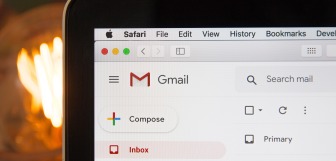How to Make a Newsletter: A Complete Guide
There are nearly 4.26 billion email users worldwide [1]. So, if you're not already using email marketing to reach your target audience, you're missing out on a huge opportunity.
One way to get started with email marketing is to create a newsletter. This can be a great way to keep your customers and followers up-to-date on what's new with your business while also providing them with valuable content.
Creating a newsletter can seem daunting, but it's actually fairly simple – especially if you use email marketing tools like Mailchimp or Constant Contact. In this blog post, we'll walk you through the steps of creating a newsletter, so you can start reaching your audience today.
Let's get started!
What is a newsletter?
A newsletter is a type of email that contains timely information about your business, product, or industry. This could include things like new product announcements, sales, and discounts, helpful tips or articles, or even just a recap of what you've been up to lately.
Newsletters are generally sent on a regular basis – weekly, bi-weekly, or monthly – and can be a great way to stay in touch with your customers without bombarding them with too many emails.
Let's say you're a restaurant owner. You could use a newsletter to let your customers know about new menu items, special events or promotions, and anything else that's going on at your business. Or, if you own a retail store, you could use a newsletter to announce sales, highlight new products, and provide helpful styling tips.
No matter what type of business you have, a newsletter can be a great way to keep your customers informed and engaged.
What components should a newsletter include?
Once you've decided to create a newsletter, it's important to figure out what content you want to include. This will vary depending on your business, your audience, and your email campaign but there are a few key components that every newsletter should have.
1. A catchy headline
Your headline is the first thing recipients will see when they open your newsletter, so it's important to make it count. Keep it short and sweet, and make sure it clearly communicates what's inside. For example, if you're a bar owner you could use a headline like "Tasty Tipples for Summer' or "New Season, New Menu."
2. Brief intro
After the headline, you'll want to include a brief intro that tells recipients what they can expect from the newsletter. This is your chance to set the tone and give a little preview of the content to come. If you're a boutique owner, you might say something like, " Summer is finally here, and we've got some great new arrivals in store."
3. Engaging content
The bulk of your newsletter should be made up of engaging, informative content that will be of interest to your target audience. This could include things like product announcements, helpful tips or articles, interesting facts or statistics, or even just a recap of what you've been up to lately. If you own a barber shop, you might want to include an article on the latest hair trends, or if you run a blog, you could share your latest post.
4. Call-to-action
Every newsletter should include a call-to-action (CTA) that encourages recipients to take some sort of action, whether it's visiting your website, making a purchase, signing up for your email list, or taking advantage of a special offer. Without a CTA, your newsletter will be little more than a passive update on what's going on with your business.
Some popular CTAs include:
- Visit our website: This is a great CTA if you want recipients to check out your new product line, read a blog post, or simply learn more about your business.
- Shop now: Use this CTA if you're running a sale or promotion, or if you have a new product that you want customers to buy.
- Sign up today: Include this CTA if you're growing your email list or if you have a freebie or discount that recipients can take advantage of by signing up.
- Learn more: If you want recipients to read a particular article or learn more about a specific topic, this is the CTA for you.
- Get 10% off your next purchase: This CTA is great for encouraging recipients to make a purchase, and the added incentive of a discount is always a bonus.
5. Unsubscribe link
Lastly, every newsletter should include an unsubscribe link in case recipients want to stop receiving your emails. This may seem counterintuitive, but it's actually required by law in many countries. Including an unsubscribe link shows that you're respecting your recipients' wishes, and it can actually reduce the number of people who mark your emails as spam.
Why should you create a newsletter?
There are lots of reasons to create a newsletter, but here are a few of the most important:
1. Newsletters help you stay in touch with your customers
If you want to maintain a strong relationship with your customers, you need to keep in touch with them on a regular basis. A newsletter is a great way to do this, as it allows you to provide timely information about your business without bombarding your customers with too many emails.
2. Newsletters help you promote your products or services
If you have a new product or service that you want to promote, a newsletter is a great way to do it. You can use your newsletter to announce the launch of your new product, offer discounts or coupons, and provide helpful information about how to use your product to your email subscribers.
3. Newsletters help you generate leads
If you're looking for new customers, a newsletter can be a great way to generate leads. You can use your newsletter to promote your business, highlight your products or services, and even offer freebies or discounts to encourage people to sign up.
4. Newsletters help you build brand awareness
If you want people to know more about your business, you need to get your name out there. A newsletter is a great way to do this, as it allows you to reach a large audience with your message.
5. Newsletters help you stay on people’s minds
If you want people to think of your business when they need your products or services, you need to stay at the forefront of people’s minds. A newsletter is a great way to do this, as it allows you to stay in touch with your customers on a regular basis.
Get started with Mailchimp
Epos Now and Mailchimp make it easy to create powerful messages that drive customer engagement. Setup only takes a few minutes, so you can try Mailchimp today.
- Build email templates with simple drag and drop tools
- Convert lost sales into happy customers with automated workflows.
- Grow your audience with powerful sign-up forms.
- Monitor the performance of your emails with detailed reports.
Tools for creating a newsletter
Now that we've gone over some of the reasons why you should create a newsletter let's talk about how to actually create one.
There are a few different tools you can use to create your newsletter, but we recommend using Mailchimp. These platforms make it easy to create beautiful newsletters, and they provide all the tools you need to manage your subscribers and track your results.
If you want to know how to create a Mailchimp newsletter, check out their websites for step-by-step instructions.
How to Create A Newsletter in Mailchimp
Setting up a newsletter in Mailchimp is easy, and it only takes a few minutes. Just follow these steps:
- Create a Mailchimp account.
- Choose a template for your newsletter. Mailchimp has a wide variety of templates to choose from, so you're sure to find one that fits your needs.
- Add your content to the template. This includes things like your header, body text, images, and call-to-action buttons.
- Preview your newsletter to make sure everything looks good.
- Send your newsletter to your subscribers!
Six Steps for creating a newsletter
Now that you know why you should create a newsletter and what tools to use, it's time to get started on creating your first newsletter. Follow these six steps to create a successful newsletter:
1. Define your goals
Before you start creating your newsletter, take some time to think about what you want to accomplish with it. Do you want to promote a new product? Drive foot traffic to your shop? Generate leads? Once you know what your goals are, you can start creating your newsletter with those goals in mind.
2. Choose the email template
Once you've defined your goals, it's time to choose a template for your newsletter. A template is essentially the layout for your newsletter. It's important to choose a template that's easy to read and visually appealing. If you’re not sure how to create a newsletter template, tools like Mailchimp and Constant Contact both offer a wide variety to choose from, so you can find one that's perfect for your needs.
3. Customise your template
Once you've chosen a template, it's time to customise it to match your brand. Add your logo, colours, and images to make your newsletter your own.
4. Write your content
Now it's time to start writing your content. Keep your goals in mind as you write, and make sure to include helpful information that your readers will find valuable. Remember the 3 C's of content marketing: your content should be clear, concise, and compelling. Also be sure to avoid any jargon or technical terms that your readers might not understand.
5. Add links and buttons
Make sure to add links and buttons to your newsletter so people can easily click through to your website or blog. When adding links, be sure to use effective calls to action that will encourage people to click. Also, colours go a long way in making your newsletter more clickable, so make sure to choose colours that stand out
6. Send your newsletter
Once you're happy with your newsletter, it's time to send your email to your customers!
How to Monitor and Improve the Performance of Your Newsletter
Once you've sent your newsletter, it's important to monitor its performance so you can see what's working and what's not. There are a number of metrics you can track, but some of the most important ones to focus on are:
- Open rate: Your open rate will be the percentage of people who open your newsletter. The average email open rate is 21.5% [2]. If your open rate is below this, consider ways to make your subject line more enticing.
- Click-through rate: This measures how many people clicked on the links in your newsletter. A good click-through rate is around 2.91% [3]. If yours is lower, try adding more interesting content or CTAs.
- Unsubscribe rate: This measures how many people unsubscribed from your newsletter after receiving it. A good unsubscribe rate is below 0.5% [4]. If yours is higher, consider ways to improve the quality of your content.
By monitoring these metrics, you can see what's working well and what needs improvement. Make changes to your newsletter accordingly, and you'll be sure to see better results over time.
Final Thoughts
And that's it! Creating a successful newsletter doesn't have to be complicated.
Just follow these simple steps, and you'll be on your way to creating a newsletter that will help you achieve your business goals.
Your email marketing strategy is one of the most important tools in your marketing toolbox. So don't wait any longer, get started on creating your newsletter today!
Want to Know How Our Integrations Can Help Your Business? Get in Touch Today!



